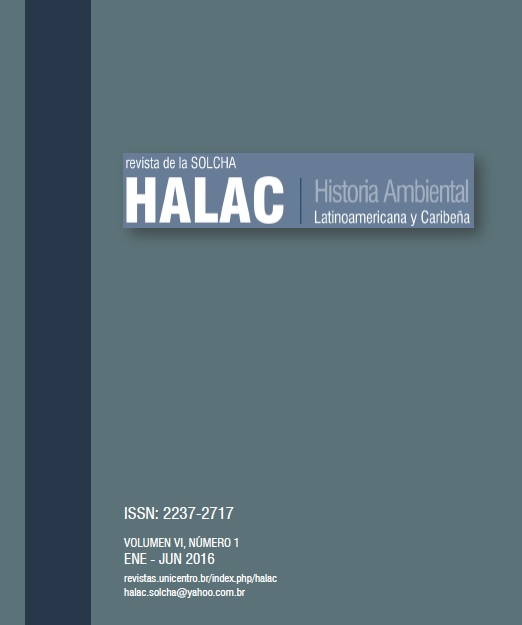Landscape reading methodology of urban forests: interpreting past and current socioecological interactions in Rio de Janeiro
DOI:
https://doi.org/10.5935/2237-2717.20160011Abstract
The landscapes of Rio de Janeiro are a product of a long history of the society interacting with the forest, with the legacies of this historical interaction being imprinted and hidden within the vegetation cover. Reading this landscape requires the following steps: 1) a comprehensive history of the process of human occupation and land uses; 2) revealing, through material evidence past human uses; 3) deciphering current ecological change, through species structure and composition (exotic species, different assemblage patterns). The requirements to accomplish these steps stem from field knowledge mainly from geography and ecology, and archival knowledge in researching historical documents. Here we highlight the importance of a multi-scalar approach, reading the landscape from a broad perspective using GIS and satellite imagery to understand the spatial distribution of the physical, ecological and social elements of the landscape.Downloads
Published
2016-09-09
How to Cite
Solorzano, A., Oliveira, R. R. de, & Lazos-Ruiz, A. E. (2016). Landscape reading methodology of urban forests: interpreting past and current socioecological interactions in Rio de Janeiro. Historia Ambiental Latinoamericana Y Caribeña (HALAC) Revista De La Solcha, 6(1), 211–224. https://doi.org/10.5935/2237-2717.20160011
Issue
Section
Articles
License
This journal offers immediate free access to its content, following the principle that providing free scientific knowledge to the public provides greater global democratization of knowledge.
As of the publication in the magazine the authors have copyright and publication rights of their articles without restrictions.
The HALAC Magazine follows the legal precepts of the Creative Commons - Attribution-Non-Commercial 4.0 International license. 




